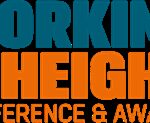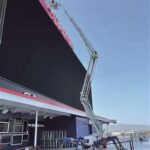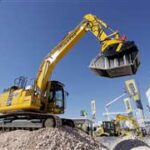If you think all boom lifts are basically giant robot arms and that’s that,
think again.
A new wave of modular boom lifts is rewriting the rules, proving that smarter design isn’t just cool—it saves money, time, and a ton of headaches.
Let’s lift the lid (pun intended) on why modular boom lifts are making so much noise in the construction world—and why you might want one on your next project.
🤔 First, What Is a Modular Boom Lift?
In simple terms:
A modular boom lift is built with interchangeable components—frames, booms, drive units, platforms—that can be swapped, serviced, or upgraded much more easily than traditional designs.
Think of it like LEGOs for heavy machinery:
-
Fewer unique parts
-
More shared components across models
-
Easier customization
-
Faster repairs
No more “special order from the factory” every time a joystick breaks.
No more six-week waits for a left-side boom cylinder.
Just plug, play, and get back to work.
📦 Key Features of Modular Boom Lifts
✅ Standardized Platform Sizes
Easier to fit tools, materials, or attachments across models.
✅ Shared Drive Systems
Same motors and axles across multiple lift types = simplified training and maintenance.
✅ Bolt-On Booms and Arms
Damaged sections can be replaced individually, not the whole boom.
✅ Flexible Powertrains
Many modular designs allow the same frame to run electric, hybrid, or diesel systems.
✅ Simplified Parts Inventory
Rental fleets and big contractors love this—less warehouse space for spares.
🏗️ Why Modular Design Pays Off Big Time
💰 Lower Ownership Costs
-
Fewer spare parts = less money tied up in inventory.
-
Easier repairs = lower labor costs.
-
Less downtime = more revenue.
🛠️ Faster Maintenance
-
Standardized parts = quick swaps instead of complex rebuilds.
-
Field service techs love modular designs—they spend more time fixing and less time scratching their heads.
🚀 Greater Flexibility
-
Scale up or down easily: want to upgrade an electric drive to a hybrid system?
On some modular lifts, it’s possible without buying a whole new machine.
🔄 Better Resale Value
-
Easier maintenance means better condition over time.
-
Resellers prefer modular models—they’re easier to refurbish and re-certify.
📋 Popular Modular Boom Lift Examples
| Brand | Model | Notable Feature |
|---|---|---|
| Genie | XC Series | Modular platform & load sensing |
| Dingli | BT44ERT | Modular electric/diesel platform |
| Haulotte | HT46 RTJ O | Standardized architecture |
| JLG | 600S/800S Series | Service-friendly modular builds |
Manufacturers are realizing:
Smart modularity = smarter customers.
⚙️ Real-World Benefits on the Jobsite
Imagine this:
You’re operating a BT44ERT modular boom lift.
Mid-project, the battery module fails.
Instead of calling HQ, waiting three days, and losing the client’s patience…
✅ Swap the battery module in a few hours.
✅ Job back on track.
✅ Boss buys you lunch. (Maybe.)
Multiply that across a fleet of 50 machines, and you’re talking serious operational efficiency.
⚠️ Are There Any Downsides?
Nothing’s perfect.
-
Upfront cost: Modular models can cost slightly more initially (but usually pay for themselves faster).
-
Training: Mechanics and operators may need brief re-training to get used to modular servicing.
-
Standardization gaps: Not every manufacturer’s modular system works across all their models yet.
Still, the long-term upsides almost always outweigh the short-term bumps.
🏁 Final Thoughts
Modular boom lifts aren’t just a design fad.
They represent a smarter, faster, and more cost-effective way to build and maintain access equipment.
If your projects demand flexibility…
If your crews demand uptime…
If your accountants demand lower costs…
👉 Modular boom lifts check every box.
Next time you’re shopping for a lift, think modular.
Because in construction, as in life, smart design always wins.




